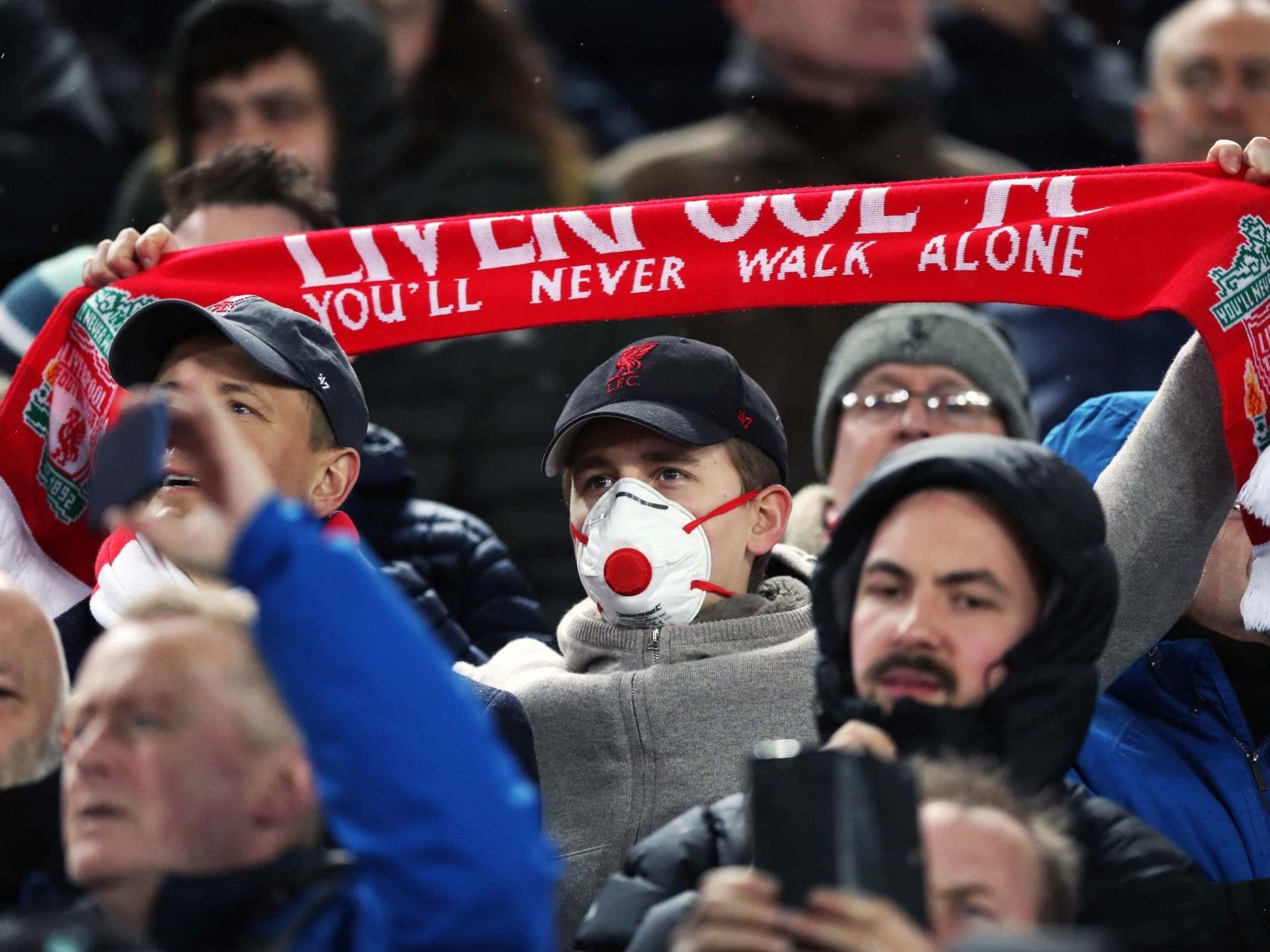Looming return of fans in stadia is becoming a minefield for all clubs across the country
Aim is to get between 20 and 30 percent of spectators into grounds for the round of Premier League fixtures beginning on 3 October

Your support helps us to tell the story
From reproductive rights to climate change to Big Tech, The Independent is on the ground when the story is developing. Whether it's investigating the financials of Elon Musk's pro-Trump PAC or producing our latest documentary, 'The A Word', which shines a light on the American women fighting for reproductive rights, we know how important it is to parse out the facts from the messaging.
At such a critical moment in US history, we need reporters on the ground. Your donation allows us to keep sending journalists to speak to both sides of the story.
The Independent is trusted by Americans across the entire political spectrum. And unlike many other quality news outlets, we choose not to lock Americans out of our reporting and analysis with paywalls. We believe quality journalism should be available to everyone, paid for by those who can afford it.
Your support makes all the difference.The plans to bring supporters back into Premier League stadiums present a potential minefield for all clubs, but allowing people back into the stands is even more complicated for clubs with geographically widespread fanbases.
The likes of Liverpool and Manchester United have season-ticket holders living across the UK. The aim is to get between 20 and 30 percent of spectators into grounds for the round of fixtures beginning on 3 October. Away supporters are unlikely to be allowed to travel, but – given a large proportion of those who normally fill Anfield and Old Trafford come from outside Merseyside and Manchester – it is not just a simple matter of conducting a ballot of regulars and rotating the season-ticket list.
With the re-entry of fans less than six weeks away, arrangements are still up in the air. The clubs are struggling to come up with a coherent policy in the absence of direction from Westminster. Politicians are keen to create an atmosphere of normality, but the lack of leadership from the top is causing concern across the Premier League.
“It’s a mess,” one top-flight executive told The Independent. “Some big decisions need to be made at government/league level before we can make our own. If there’s no away fans, that will have an impact on things. So would the potential for local lockdowns. It’s a big, bad minefield.”
The Department for Digital, Culture, Media and Sport has been holding talks with the Premier League and Football League and the discussions are said to have been positive, but one of individuals involved in the dialogue suggested that efforts have been undermined by confusing signals from Downing Street.
“It’s the blonde numpty [Boris Johnson] who keeps interfering,” the source said. “[He] makes it up one day at a time.”
A number of senior figures in the game’s ruling bodies are jaundiced by their experience in March, when the government’s COBRA committee, the body that deals with national emergencies, insisted that it was safe to continue playing in front of fans even as the pandemic took hold with a deadly grip. The Premier League and Football League suspended fixtures of their own volition after Mikel Arteta, the Arsenal manager, tested positive for coronavirus. Three days later, the government announced the first set of lockdown measures, although it was another week before the implementation of strict confinement rules.
There is similar scepticism among the clubs. “It needs some rational logic to be applied,” a source said. “The problem is there’s never any rational logic.”
Almost everyone sees the sense in barring away fans until Covid-19 is under control. The ramifications of allowing 3,000 Atletico Madrid supporters to travel to Anfield in March for the Champions League knockout round – when the Spanish capital was one of Europe’s virus hotspots – are still being felt, but it is clear that the event had a serious impact on mortality rates on Merseyside. Large groups of people journeying cross-country will continue to be discouraged until the environment is safe. However, Liverpool and United attract more long-distance support than most top-flight teams.

The likes of Newcastle United, who operate in a one-team city, have the potential to control the flow of supporters by using municipal postcodes to help select those allowed into the stadium. This is less workable for the north west’s big two. Finding a solution that will satisfy locals and those from further afield could prove problematic.
In Liverpool and Manchester, there are already underlying tensions between those who live close to the ground and out-of-town visitors. The majority in the stadium do not care where their fellow fans come from, but a small but vocal minority on each side of the argument believe the other group are given favoured treatment by the club. This is not true, but the inevitable sniping has already started on social media. The narrative that outsiders might be bringing a dangerous virus into a city when coming to watch a game has given the more extreme voices the chance to expound their narrow form of terrace xenophobia.
Getting things back to normal will require clubs and the game’s authorities to tread a delicate line. Regional lockdowns and potential outbreaks of the virus require a certain level of flexibility, but for things to run smoothly the government need to take charge.
The clubs and the leagues were left to make life and death decisions in March. The same cannot be allowed to happen in October.
Join our commenting forum
Join thought-provoking conversations, follow other Independent readers and see their replies
Comments